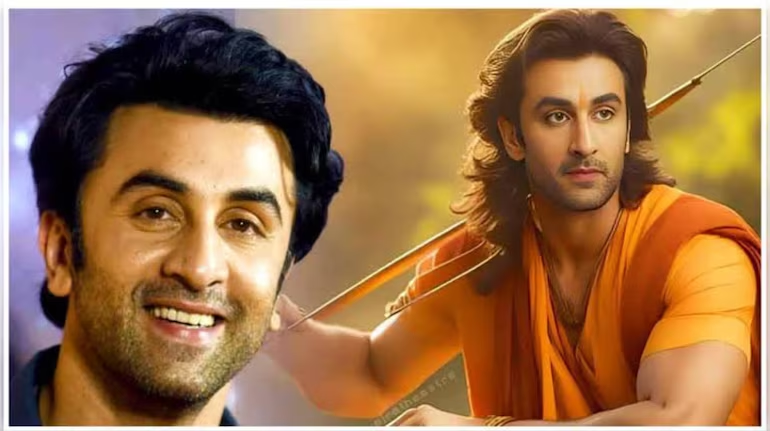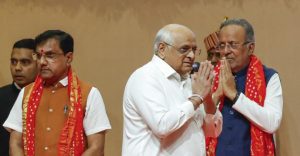The upcoming mythological film Ramayana, directed by Nitesh Tiwari, has drawn significant online criticism, primarily aimed at actor Ranbir Kapoor, who is cast as Lord Rama. What began as casting skepticism has grown into a full-fledged online hate campaign, with many questioning Kapoor’s suitability for the revered role.
Concerns Over Casting Choices
Since rumours surfaced about Ranbir Kapoor playing Lord Rama, a wave of criticism has followed. Many feel Kapoor’s image and screen persona don’t align with the spiritual and moral qualities associated with the deity. Veteran actor Mukesh Khanna, known for his role in Mahabharat, expressed strong doubts, stating that actors with controversial reputations cannot portray divine characters convincingly.
Actress Kangana Ranaut also lashed out, referring to Kapoor with derogatory language and accusing him of being unfit to represent such a sacred figure. She cited his personal life and past relationships as reasons to question the casting decision.
Appearance and Cultural Representation
Some social media users have argued that Kapoor’s fair complexion and grooming style clash with traditional depictions of Lord Rama, who is often shown with darker skin in Indian scriptures and folklore. Others criticized his hairstyle, calling it inauthentic.
One of the most contentious issues raised was Kapoor’s past remarks about consuming beef. A petition on Change.org urged the film’s makers to reconsider his casting, claiming that his lifestyle does not align with the values Lord Rama represents.
Voices from the Past
Dipika Chikhlia, who played Sita in the iconic 1987 TV series Ramayan, shared her concerns as well. She criticized the current trend of reimagining religious epics, saying that frequent remakes are diluting their spiritual depth and cultural value. She warned that modern versions might risk losing the essence of the original narratives.
Cyberbullying and Online Harassment
The debate over the casting took a dark turn when a woman who mocked Ranbir’s appearance as Lord Rama became the victim of online abuse. Her image was digitally altered and circulated in obscene forms, leading her to file a complaint with cybercrime authorities in Mumbai. Several users condemned the toxic behavior of Kapoor’s fanbase and called for action against those involved in the harassment.
Counter Arguments and Support
Despite the backlash, many fans and commentators defended Kapoor. They pointed to his religious upbringing, regular observance of Hindu rituals, and his family’s devotion. Supporters also emphasized that an actor’s private life should not disqualify them from playing mythological roles if they can do justice to the character on screen.
The film itself is reported to be India’s most expensive production to date, with a budget of ₹835 crore (approximately $100 million). Director Nitesh Tiwari has assured that the movie will be respectful and stay true to the epic’s original values.
Reasons Behind the Uproar
The controversy has been amplified by several factors:
- The fallout from Adipurush: The 2023 version of Ramayana received heavy backlash for taking too many creative liberties.
- Religious significance: Lord Rama is not just a character, but a sacred figure for millions. Misrepresentation feels personal for many.
- Social media’s amplifying effect: Cultural issues now quickly turn viral, intensifying public debates and emotional responses.
What Lies Ahead
The production team has completed the first part of filming, and Ramayana: Part 1 is expected to release in 2026. However, with growing online criticism and increasing scrutiny, the road ahead may be challenging.
| Question | Implication |
|---|---|
| Can Kapoor win over critics with his performance? | The film’s success may hinge on public perception. |
| Will legal action be taken over cyberbullying? | Stricter monitoring of online behavior may follow. |
| Can mythology be adapted without offending religious sentiments? | A test of balance between creativity and reverence. |
Conclusion
The controversy around Ranbir Kapoor’s role in Ramayana reflects deeper tensions between religious devotion and artistic freedom. As the release approaches, it remains to be seen whether the film can bridge these divides—or deepen them further. Regardless of the outcome, this debate will likely influence how India tells its sacred stories on the big screen for years to come.





More Stories
U.S. Congress Warns Trump: Tariffs on India Risk Strategic Partnership
Under‑Construction Tower Collapses in Chennai, Nine Missing After Disaster
From Ice Stupas to Isolation: Sonam Wangchuk Detained Amid Ladakh Turmoil